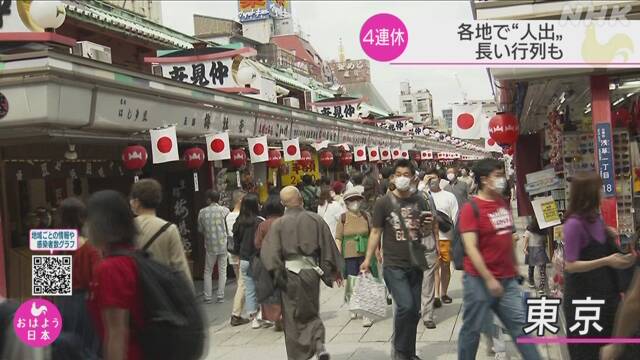Number of people during consecutive holidays The area where the number of people increased significantly compared to before the spread of corona infection was 13:52 on September 22
During the four consecutive holidays until the 22nd, the number of people in each area was lower than the same period last year in most areas.
However, compared to January to February, before the spread of the new coronavirus, the number of people increased significantly in some places.
NTT DoCoMo collects data on the number of people nationwide in a privacy-protected manner based on information on mobile phone base stations.
According to this, the number of people on the 21st, which is the third day of the four consecutive holidays, was lower in most areas than the average of the holidays in the same month and September last year.
On the other hand, compared to the average of holidays from mid-January to mid-February before the spread of the new coronavirus, the area around Tokyo Station was minus 52%, and the area around Shinjuku Station was negative. The number of people is still decreasing in many areas, such as -14%, around Umeda in Osaka at -18%, and around Nagoya Station at -16%.
However, in some downtown areas and tourist spots, the number of people increased, and the area around Shijo Kawaramachi in Kyoto increased by 61% and the area around Yokohama Chinatown increased by 33%.
In addition, the area around Sapporo Station increased by 15%, the area around Okinawa Prefectural Office increased by + 12%, the area around Himeji Station in Hyogo Prefecture increased by 9%, the area around Sakae Station in Nagoya City increased by + 4%, and Tokyo and Ginza increased by plus or minus. It was zero.
As economic activity resumes and “Go To Travel”, a measure to stimulate tourism demand, has begun, some data show that the number of people is higher than before the spread of the infection.

